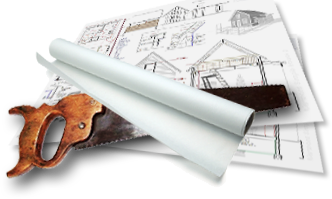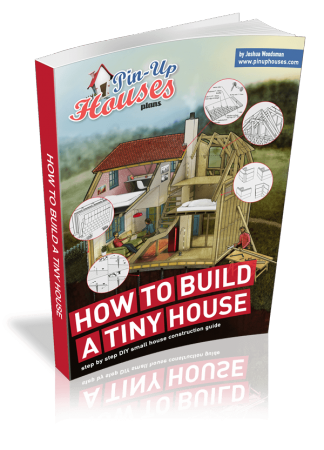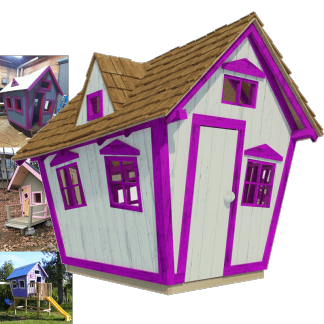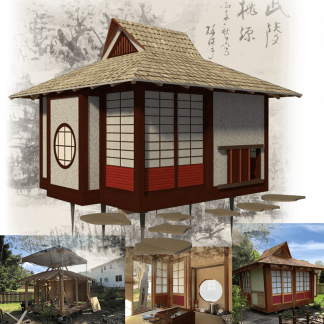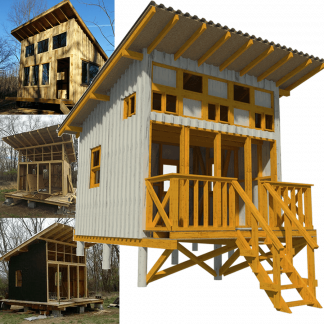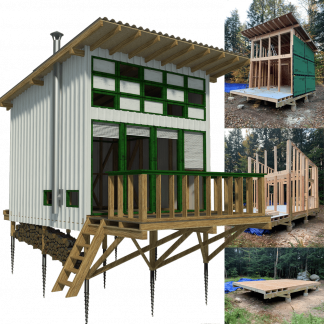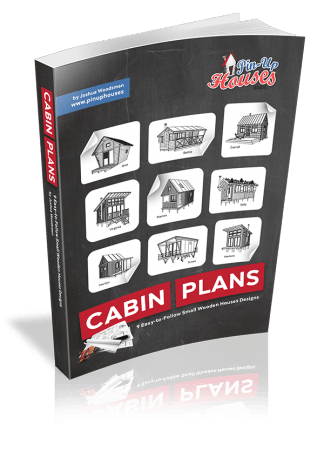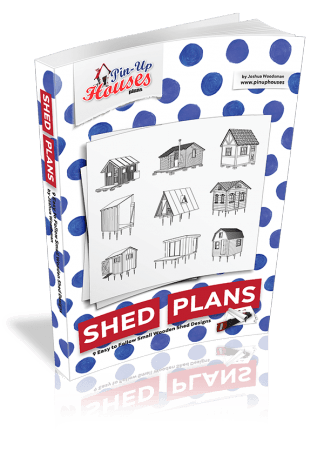In London, where rent can rival a mortgage and space is often measured in inches, the average apartment size sits between 46 and 55 square meters. It’s no surprise that compact living isn’t just common—it’s practically the norm. But small doesn’t have to mean cramped.
Enter tiny homes. These clever little structures have mastered the art of turning minimal square footage into maximum functionality. And while they may not roll through Zone 2 anytime soon, their design principles are catching the eyes of city renters and developers alike.
What if your next London flat could feel bigger, without adding a single square foot?
Let’s explore how the smartest ideas in tiny home design are quietly reshaping the future of urban rentals.
1. Multi-Functionality: Every Inch Counts
When you’re working with limited square footage, furniture shouldn’t just sit there—it should work double (or triple) duty. That’s the golden rule in tiny home design, and it’s one London’s rental market could use more often. Think wall beds that fold away by morning, sofas with hidden storage, or dining tables that collapse into compact consoles. In homes under 500 square feet, that kind of flexibility isn’t just helpful—it’s transformative.
Now imagine applying this to apartments in London for rent, especially studios or co-living setups. A foldable desk that tucks away after work hours can turn your living space back into a lounge. Seating with built-in compartments can replace bulky cabinets while keeping clutter at bay. These solutions aren’t just space savers—they create flow, improve comfort, and adapt as your day (or week) changes.
For renters, this kind of smart design means fewer compromises. You don’t have to choose between a place to host friends and a quiet corner to work—you can have both, built right into your layout.
Because in a city where space is limited but imagination isn’t, every inch should be earning its keep.
2. Built-In Storage Over Bulky Furniture
If multi-functional furniture makes small spaces livable, built-in storage is what keeps them livable. Tiny homes have long mastered this concept—transforming staircases into drawers, carving storage into walls, and even hiding compartments beneath the floorboards. It’s all about reducing bulk and reclaiming space that traditional furniture often wastes.
In the context of London apartments, where floor space is at a premium, this approach makes perfect sense. Instead of squeezing in freestanding wardrobes or oversized shelving units, imagine walk-in-style storage built into alcoves, lofted shelves above door frames, or even pull-out drawers under platform beds. Not only do these designs create more room to move, but they also reduce visual clutter, making small flats feel calmer and more spacious.
Interestingly, a recent UK housing survey showed that nearly 70% of renters preferred built-in storage solutions over freestanding ones, citing better use of space and easier organization as top reasons. For landlords, that’s a valuable insight—smart storage doesn’t just look good, it adds tangible value.
And when renters can store more without bringing in more furniture, they’re likely to stay longer. After all, less mess means less stress.
3. Natural Light and Minimalist Aesthetics
One of the most overlooked secrets in tiny home design isn’t about squeezing more in—it’s about letting more in. Natural light, when used intentionally, can completely transform a small space. Large windows, skylights, and open layouts give even the tiniest structures a sense of airiness that defies their footprint.
London flats, especially older conversions or lower-ground units, often struggle with dim corners and dated layouts. But there’s a workaround. Mirrors positioned opposite windows can double the light flow. Open shelving instead of wall cabinets helps rooms breathe. And a simple coat of white or pale neutral paint? It can visually lift ceilings and stretch walls without a single renovation.
Minimalism also plays a big role here. By keeping décor clean, furniture low-profile, and surfaces uncluttered, a room naturally feels larger. That’s not just a style choice—it’s a spatial strategy.
So if a London rental feels tight, the answer might not be knocking down walls—it might be pulling back on what’s inside and letting the light do the heavy lifting.
4. Purposeful Zoning in Open Floor Plans
When square footage is limited, walls can feel more like barriers than boundaries. That’s why tiny homes often rely on subtle zoning techniques—clever cues that define space without boxing it in. In London rentals where open-plan layouts are common, this kind of visual separation can turn a single room into a multifunctional home.
Instead of building divisions, think about designing them. Rugs can anchor a lounge area, pendant lighting can spotlight a dining nook, and the back of a sofa can double as a “wall” between the living space and a bed. It’s all about directing the eye and shaping function without sacrificing openness.
Here are a few easy-to-implement zoning tricks for compact flats:
- Use curtain dividers to create a bedroom nook.
- Add a floor lamp or pendant light to mark off a work zone.
- Place corner shelving to section off a reading or coffee corner.
- Opt for dual-purpose furniture, like an expandable table that serves as a desk by day and dinner space by night.
For renters working from home or couples juggling shared space, zoning isn’t just decorative—it’s a way to make small living feel purposeful, not crowded.
5. Eco-Friendly Fixtures and Sustainable Materials
As the world gets smaller—both in terms of living space and environmental tolerance—eco-conscious design is no longer a luxury; it’s an expectation. Tiny homes have set the tone by embracing sustainable materials like reclaimed wood and integrating energy-efficient fixtures as standard, not as add-ons.
London rentals can follow suit, and frankly, many already are. From LED lighting to low-flow faucets, small changes can have a big impact. Swapping traditional flooring for bamboo or cork adds warmth without sacrificing sustainability. Even something as simple as offering smart thermostats or motion-sensor lights can reduce energy bills and attract the right kind of tenants.
A recent survey found that nearly 60% of UK renters under 35 actively seek out homes with sustainable features. That’s not just a trend—it’s the future of rental demand. For landlords, investing in eco-friendly updates isn’t just good for the planet, it’s good for business.
Because in today’s rental landscape, green isn’t just a color scheme—it’s a value proposition.
6. Lessons for Developers and Landlords
For developers and landlords alike, the biggest takeaway from the tiny home movement isn’t about going smaller—it’s about getting smarter with space. In fact, well-designed compact apartments often generate more rent per square foot than larger units that lack thoughtful layout or utility. Efficiency is becoming a premium feature, not a compromise.
This opens the door for landlords managing older London stock. A flat with awkward corners and oversized furniture can be transformed with built-in storage, compact kitchenettes, and multi-use living areas. These updates not only modernize the space but also justify higher rents and attract long-term tenants.
For developers, tiny home design offers a blueprint for future builds—especially as demand for urban micro-units and co-living options continues to rise. Projects like The Collective in Canary Wharf and Pocket Living’s micro-apartments across London are already proving how modular design and community-centered layouts can redefine city living.
Design isn’t just about aesthetics anymore—it’s about creating value. And for anyone building or managing rentals in London, embracing small-space innovation might just be the smartest investment you can make.
Conclusion: Compact Can Still Mean Comfortable
Small doesn’t have to feel small. As we’ve seen, the best ideas from tiny home design—whether it’s multi-functional furniture, clever built-ins, minimalist aesthetics, or eco-conscious upgrades—can completely reshape how apartments in London for rent are experienced. When every inch is used with intention, compact living becomes not just manageable, but genuinely enjoyable.
For renters, it’s worth seeking out properties that go beyond four walls and a floor plan. Look for layouts that feel open, storage that disappears into the design, and fixtures that reflect a more sustainable lifestyle.
And for landlords or developers, there’s a real opportunity here. Smart, space-savvy upgrades don’t just attract better tenants—they elevate the value of your property in a market where space is limited, but expectations aren’t.
Because in the end, comfort isn’t about square footage—it’s about how well your space works for you.

